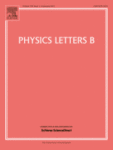 Observation of Geo-Neutrinos
Observation of Geo-Neutrinos
Physics Letters B
Volume 687, Issues 4–5,
19 April 2010, Pages 299-304
doi:10.1016/j.physletb.2010.03.051
(local copy; preprint on arXiv)
Italian press coverage of our Geo-Neutrino research (partial list):
- “Le particelle che arrivano dal centro della Terra” from ANSA
- “Primo sguardo al centro della Terra” from “Il Corriere della Sera”
- “Particelle dal centro della terra” from “La Repubblica”
- “La prima volta dei geoneutrini” from “Galileo”
- “Visti per la prima volta i geoneutrini” from “PrimaDaNoi”
Abstract
Geo-neutrinos, electron anti-neutrinos produced in β decays of naturally occurring radioactive isotopes in the Earth, are a unique direct probe of our planet’s interior. We report the first observation at more than 3σ C.L. of geo-neutrinos, performed with the Borexino detector at Laboratori Nazionali del Gran Sasso. Anti-neutrinos are detected through the neutron inverse β decay reaction. With a 252.6 ton yr fiducial exposure after all selection cuts, we detected 9.9 ![]() (
(![]() ) geo-neutrino events, with errors corresponding to a 68.3% (99.73%) C.L. From the
) geo-neutrino events, with errors corresponding to a 68.3% (99.73%) C.L. From the ![]() profile, the statistical significance of the Borexino geo-neutrino observation corresponds to a 99.997% C.L.
profile, the statistical significance of the Borexino geo-neutrino observation corresponds to a 99.997% C.L.
Our measurement of the geo-neutrinos rate is 3.9 ![]() (
(![]() ) events/(100 ton yr).
) events/(100 ton yr).
The observed prompt positron spectrum above 2.6 MeV is compatible with that expected from European nuclear reactors (mean base line of approximately 1000 km). Our measurement of reactor anti-neutrinos excludes the non-oscillation hypothesis at 99.60% C.L. This measurement rejects the hypothesis of an active geo-reactor in the Earth’s core with a power above 3 TW at 95% C.L.